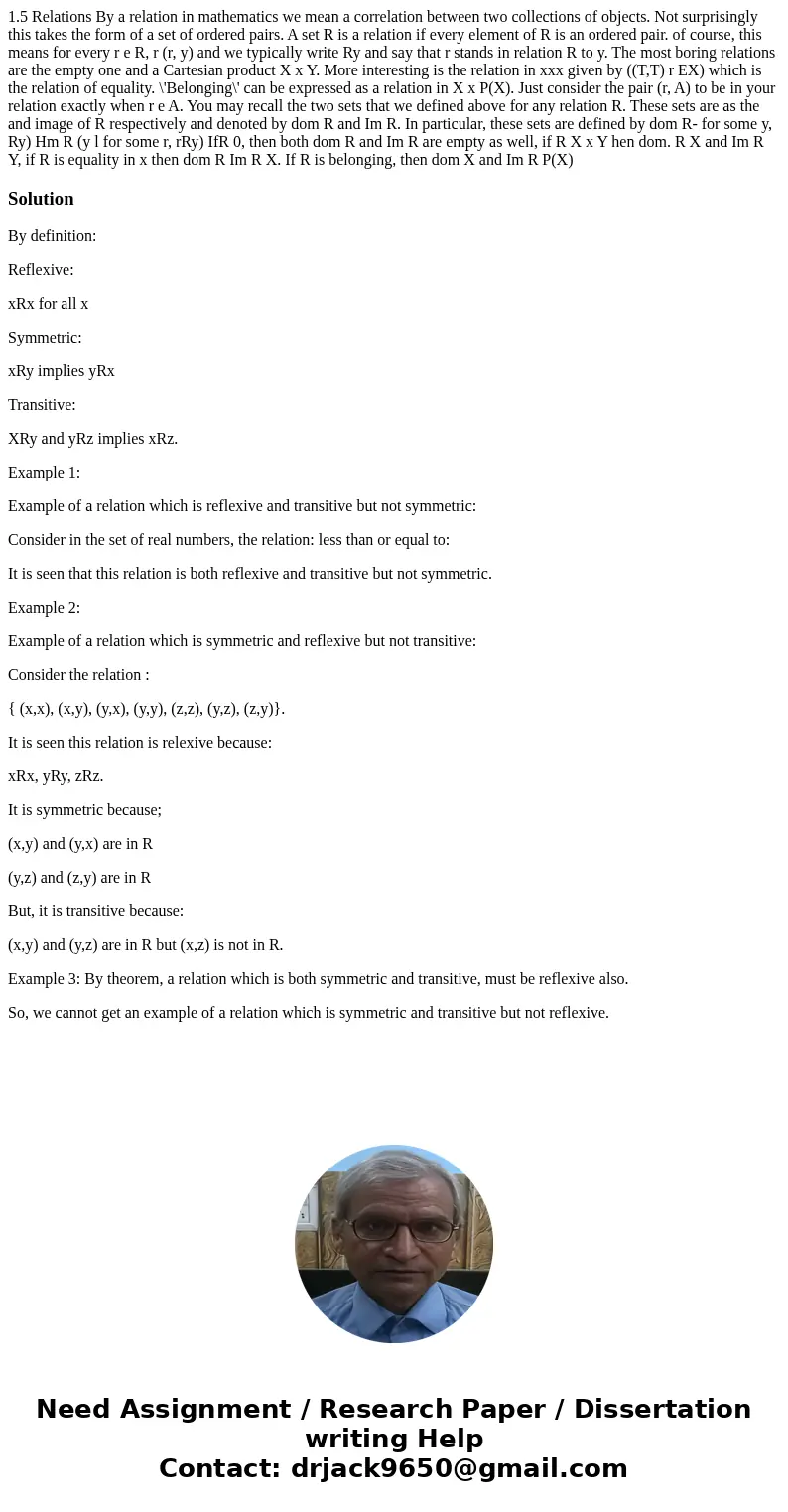1.5 Relations By a relation in mathematics we mean a correlation between two collections of objects. Not surprisingly this takes the form of a set of ordered pairs. A set R is a relation if every element of R is an ordered pair. of course, this means for every r e R, r (r, y) and we typically write Ry and say that r stands in relation R to y. The most boring relations are the empty one and a Cartesian product X x Y. More interesting is the relation in xxx given by ((T,T) r EX) which is the relation of equality. \'Belonging\' can be expressed as a relation in X x P(X). Just consider the pair (r, A) to be in your relation exactly when r e A. You may recall the two sets that we defined above for any relation R. These sets are as the and image of R respectively and denoted by dom R and Im R. In particular, these sets are defined by dom R- for some y, Ry) Hm R (y l for some r, rRy) IfR 0, then both dom R and Im R are empty as well, if R X x Y hen dom. R X and Im R Y, if R is equality in x then dom R Im R X. If R is belonging, then dom X and Im R P(X)
By definition:
Reflexive:
xRx for all x
Symmetric:
xRy implies yRx
Transitive:
XRy and yRz implies xRz.
Example 1:
Example of a relation which is reflexive and transitive but not symmetric:
Consider in the set of real numbers, the relation: less than or equal to:
It is seen that this relation is both reflexive and transitive but not symmetric.
Example 2:
Example of a relation which is symmetric and reflexive but not transitive:
Consider the relation :
{ (x,x), (x,y), (y,x), (y,y), (z,z), (y,z), (z,y)}.
It is seen this relation is relexive because:
xRx, yRy, zRz.
It is symmetric because;
(x,y) and (y,x) are in R
(y,z) and (z,y) are in R
But, it is transitive because:
(x,y) and (y,z) are in R but (x,z) is not in R.
Example 3: By theorem, a relation which is both symmetric and transitive, must be reflexive also.
So, we cannot get an example of a relation which is symmetric and transitive but not reflexive.

 Homework Sourse
Homework Sourse